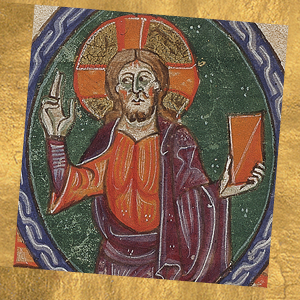St. Lawrence Deacon and Martyr

Having died a martyr for Christ, St. Lawrence is the patron of deacons, chefs and firefighters. Around the time of his feast day, which is celebrated on August 10, the night sky is lit with bright lights. The phenomenon is related to the passing of a meteorite swarm left by a comet. For folk tradition these lights are “falling stars”, tears St. Lawrence shed during his martyrdom.
The martyr of the least
The testimony of this holy martyr, born in Spain in the first half of the 3rd century, is marked by piety and charity. Immediately after his election, Pope Sixtus II entrusted him with the care of the archdiocese. As the deacon responsible for charitable activities in the diocese of Rome, Saint Lawrence administered goods and catered to the needs of orphans, widows, and the poor generally.
Guardian of the "Church Treasures"
His journey was shaken in youth by the drama of persecution. In AD 258, Emperor Valerian issued an edict: all bishops, priests and deacons must be put to death. Saint Lawrence, other deacons, and Pope Sixtus II were apprehended. The Pope was killed on 6 August. At first, the emperor offered to spare Lawrence’s life, in exchange for his handing over of “the treasures of the Church.” Lawrence is said to have presented the emperor with the sick, the needy, and the marginalized. These, he said, are the treasures of the Church. Four days later, on August 10, Saint Lawrence would be martyred.
I live on a grating
According to an ancient Passio, collected by Saint Ambrose, Saint Lawrence was burnt on a gridiron. In the De Officiis, St. Ambrose imagines a meeting between Lawrence and Pope Sixtus II, as they were heading on the way to martyrdom. In the meeting, Lawrence is imagined to have said, “Where are you going, Father, without your son? Wither do you hasten, O holy bishop, without your deacon? You have never had the habit of offering sacrifice without your minister. What, then, did you feel sorry for me, Father? Did you find me unworthy? Try me, see if you have chosen an unworthy minister for the distribution of the Lord's blood. Will you refuse to admit to the divine mysteries of being your companion in shedding blood?”
From martyrdom to glory
Saint Lawrence’s martyrdom is a supreme testament to love. Saint Leo the Great, in a homily, commented on the condemnation of St. Lawrence, “The flames could not overcome the charity of Christ; and the fire burning him without was weaker than the one he had burning within him.” St. Leo adds, “The Lord has desired to exalt his glorious name in the world so much that from the East to the West, in the lively flaring of the light radiated by the greatest deacons, the same glory that came to Jerusalem from Stephen has also touched Rome thanks to Lawrence.”
The Basilica of Saint Lawrence and the church in Panisperna
After his death, the body of Saint Lawrence was laid in a tomb on the Via Tiburtina. In this place, Emperor Constantine erected a basilica that was restored in the 20th century after damage caused during WWII by the US bombing of Rome on July 19, 1943. In the place of his martyrdom was built the church of San Lorenzo in Panisperna. According to some sources, the name derives from the custom of Franciscan friars and Poor Clares, of distributing bread and ham - panis et perna - to the poor on August 10, Saint Lawrence’s feast day.








